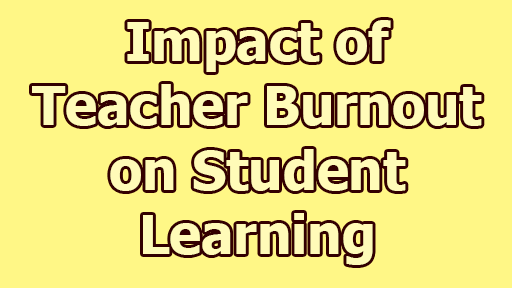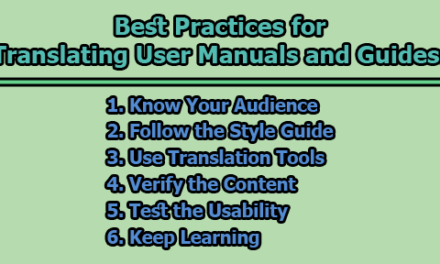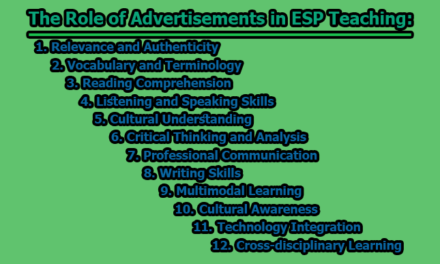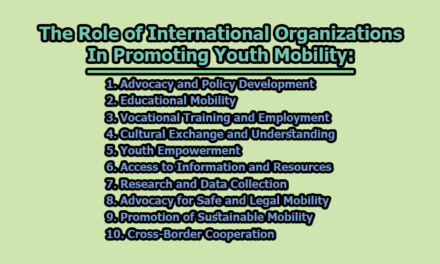Impact of Teacher Burnout on Student Learning:
In the realm of education, teachers are the unsung heroes, tirelessly working to mold the future of our society. However, this noble profession often comes with a heavy cost – teacher burnout. Teacher burnout is a pervasive issue that affects educators worldwide, with profound consequences not only for the teachers themselves but also for their students and the education system as a whole. In this article, we will delve deep into the impact of teacher burnout on student learning.
1. Understanding Teacher Burnout:
Before delving into the effects of teacher burnout on student learning, it’s essential to comprehend what teacher burnout entails. Teacher burnout is a state of physical, emotional, and mental exhaustion caused by prolonged exposure to excessive stress, overwhelming workload, and the feeling of being undervalued or unsupported. It is characterized by a profound sense of fatigue, cynicism, and a reduced sense of accomplishment. To truly grasp the magnitude of its impact on students, we must first understand its root causes and manifestations.
1.1 Causes of Teacher Burnout:
- Excessive Workload: One of the primary drivers of teacher burnout is the unrelenting workload. Educators are often burdened with a multitude of tasks beyond their core responsibilities. These can include administrative tasks, grading, and classroom management duties, all of which consume substantial time and energy (Ingersoll & Strong, 2011).
This excessive workload not only leaves teachers with little time for the core act of teaching but also adds an overwhelming layer of stress to their professional lives.
- Lack of Resources: Inadequate resources pose a significant challenge for teachers and can amplify the stress they face. These resources encompass teaching materials, support staff, and technological tools. When teachers lack access to these essential resources, it can hinder their ability to effectively deliver lessons and support students (Johnson, Kraft, & Papay, 2012).
Teachers may find themselves improvising solutions or spending excessive time compensating for these resource deficiencies, which further contributes to their burnout.
- Emotional Drain: Teaching is a profession that demands emotional labor. Dealing with the emotional challenges of teaching, such as managing student behavior issues, navigating parental pressures, and meeting societal expectations, can lead to profound emotional exhaustion (Maslach, Schaufeli, & Leiter, 2001).
Constantly addressing the emotional needs of students, managing conflicts, and balancing their own emotions can take a toll on teachers, leaving them emotionally drained.
- Limited Autonomy: Autonomy is a crucial aspect of job satisfaction for many professionals, including teachers. When teachers feel micromanaged or have limited control over their teaching methods and classroom decisions, it can contribute significantly to burnout (Skaalvik & Skaalvik, 2010).
A lack of professional autonomy can make teachers feel disempowered and undervalued, leading to frustration and cynicism.
- Low Compensation: In many regions, teachers are undervalued in terms of compensation. Inadequate salaries and benefits can lead to financial stress, making it difficult for educators to make ends meet (Ingersoll, 2003).
Low compensation can also contribute to feelings of being undervalued and underappreciated, exacerbating burnout.
1.2 Signs and Symptoms of Teacher Burnout: Teacher burnout manifests in various ways, and it’s crucial to recognize these signs early to address the issue effectively. Common symptoms include:
- Physical Exhaustion: Burnout often leads to constant fatigue, frequent illnesses, and sleep disturbances. Teachers experiencing physical burnout may struggle to maintain their energy levels and overall health, impacting their ability to perform their job effectively (Schaufeli & Enzmann, 1998).
- Emotional Detachment: Teachers experiencing burnout often become emotionally detached from their students and colleagues. They may exhibit signs of cynicism and reduced empathy, making it challenging to connect with and support students emotionally (Maslach et al., 2001).
- Reduced Job Satisfaction: A decline in job satisfaction and enthusiasm for teaching is a significant indicator of burnout. Teachers who once found joy in their profession may become disillusioned and dissatisfied (Skaalvik & Skaalvik, 2017).
- Decreased Performance: Burnout can result in a decline in the quality of teaching. As educators struggle to cope with their emotional and physical exhaustion, they may find it difficult to maintain their usual high standards of instruction (Kyriacou, 2001).
- Personal Life Impact: Teacher burnout spills over into personal lives, causing strain on relationships, social withdrawal, and diminished overall well-being. Teachers experiencing burnout may find it challenging to balance their professional and personal lives, leading to negative consequences in both domains (Hakanen, Bakker, & Schaufeli, 2006).
The toll of burnout on personal life can further exacerbate the cycle of stress and exhaustion.
Understanding the multifaceted nature of teacher burnout, including its causes and the variety of symptoms it presents, is essential for developing effective strategies to address and mitigate its impact on both educators and students.
2. Impact of Teacher Burnout on Student Learning:
Now that we have a clear understanding of teacher burnout, let’s explore the profound effects it can have on student learning.
2.1 Negative Classroom Environment: Teacher burnout often leads to a negative classroom environment. When educators are emotionally and mentally exhausted, it becomes challenging to create a positive and engaging atmosphere for students. The consequences of a negative classroom environment include:
- Reduced Student Engagement: Students are less likely to be engaged in lessons when teachers are disinterested or emotionally detached. Burnout can cause teachers to lose their passion for teaching, resulting in uninspiring lessons that fail to capture students’ attention (Bakker, Demerouti, & Sanz-Vergel, 2014).
This reduced engagement can hinder students’ motivation to learn and participate actively in the educational process.
- Disruptive Behavior: Burnt-out teachers may struggle to manage classroom behavior effectively. Their emotional exhaustion and decreased tolerance for disruptions can lead to increased instances of disruptive behavior among students. These disruptions not only disrupt the learning process for all students but also create a stressful and chaotic classroom environment (Hakanen et al., 2006).
Students may feel less safe and secure in such an environment, which can negatively impact their ability to focus on learning.
- Ineffective Communication: Burnout can impair communication between teachers and students. Teachers experiencing burnout may struggle to convey information clearly or to respond empathetically to students’ questions and concerns. This lack of effective communication can hinder students’ ability to understand the material, seek help when needed, and build positive relationships with their teachers (Skaalvik & Skaalvik, 2010).
When students feel that their teachers are not approachable or responsive, it can create barriers to effective learning and support.
2.2 Diminished Quality of Instruction: Teacher burnout can significantly impact the quality of instruction students receive. Educators who are burnt out may struggle to deliver effective lessons, resulting in:
- Limited Creativity: Burnout stifles creativity, making it difficult for teachers to develop innovative and engaging teaching strategies. The mental and emotional exhaustion associated with burnout can lead to a lack of enthusiasm for teaching, causing lessons to become routine and uninspired (Bakker et al., 2014).
When creativity wanes, students miss out on opportunities for dynamic and memorable learning experiences.
- Reduced Feedback and Assessment: The exhaustion and cynicism associated with burnout may lead to inadequate feedback and assessment of student work. Teachers overwhelmed by burnout may provide minimal feedback, fail to recognize students’ progress or overlook opportunities for constructive assessment (Maslach et al., 2001).
This lack of feedback can hinder students’ ability to identify their strengths and weaknesses and make necessary improvements in their learning.
- Missed Opportunities for Differentiation: Burnout can prevent teachers from tailoring their instruction to meet the diverse needs of their students effectively. In a state of emotional and mental exhaustion, educators may find it challenging to adapt their teaching methods to accommodate different learning styles or provide additional support to struggling students (Skaalvik & Skaalvik, 2010).
As a result, students with unique learning needs may not receive the individualized attention and support required for their academic growth.
2.3 Emotional Disconnect: Teachers experiencing burnout are more likely to emotionally disconnect from their students. This emotional distance can be particularly detrimental, as it affects students’ social and emotional development:
- Lack of Support: Students may feel unsupported and alienated when their teachers are emotionally distant. Burnt-out educators may struggle to provide the emotional support and encouragement that students need to thrive. This lack of support can result in feelings of isolation and anxiety among students, negatively impacting their overall well-being (Hakanen et al., 2006).
Students may become disengaged from the learning process when they feel that their teachers are not invested in their success.
- Reduced Mentorship: Burnt-out teachers may be less inclined to provide mentorship and guidance to their students. Mentorship plays a critical role in students’ personal and academic development, offering them valuable insights and support in their educational journey (Bakker et al., 2014).
When teachers are emotionally disconnected, students miss out on the mentorship that can help them set goals, overcome challenges, and make informed decisions about their futures.
2.4 Impact on Student Achievement: Perhaps the most concerning consequence of teacher burnout is its direct impact on student achievement. Research consistently shows that students taught by burnt-out teachers tend to perform worse academically:
- Lower Test Scores: Students of burnt-out teachers often score lower on standardized tests and assessments. The diminished quality of instruction, reduced engagement, and limited support in the classroom all contribute to lower academic performance (Skaalvik & Skaalvik, 2017).
This decline in test scores can have long-term consequences for students’ educational trajectories and opportunities.
- Achievement Gaps: Teacher burnout can exacerbate existing achievement gaps. Vulnerable students, in particular, may suffer the most from diminished instruction and support. The negative effects of burnout can disproportionately affect students in underserved communities, widening existing disparities in educational outcomes (Ingersoll & Strong, 2011).
Burnout can perpetuate and reinforce inequities in the education system, hindering efforts to provide all students with an equal chance at success.
- Graduation Rates: High levels of teacher burnout are associated with lower graduation rates, particularly in underserved communities (Ingersoll & Strong, 2011). When students experience a negative classroom environment, diminished instruction, and emotional disconnect from their teachers, they are more likely to disengage from school and drop out.
Lower graduation rates have significant social and economic implications, affecting students’ future opportunities and prospects.
3. Mitigating Teacher Burnout for Improved Student Outcomes:
Given the far-reaching consequences of teacher burnout on student learning, it is imperative to address this issue effectively. Here are strategies for mitigating teacher burnout and creating a more conducive learning environment:
3.1 Adequate Resources and Support:
3.1.1 Reduce Workload: Schools should take proactive steps to reduce the workload on teachers. This can be achieved by:
- Streamlining Administrative Tasks: Simplify administrative processes and reduce paperwork, allowing teachers to focus more on their core responsibilities of teaching and planning (Ingersoll, 2003).
- Support Staff: Hire additional support staff, such as teaching assistants or clerical personnel, to help with tasks like grading and classroom organization. This delegation of duties can significantly alleviate the burden on teachers (Ingersoll & Strong, 2011).
- Technology Integration: Invest in technology solutions that can automate certain administrative tasks, such as attendance tracking and grading. This can save teachers valuable time (Johnson et al., 2012).
3.1.2 Professional Development: Invest in ongoing professional development opportunities to help teachers stay current and continuously improve their skills. This can include:
- In-Service Training: Offer regular in-service training sessions or workshops to keep teachers updated on the latest pedagogical techniques and technology tools (Johnson et al., 2012).
- Support for Continuing Education: Provide financial incentives or time off for teachers to pursue further education, such as advanced degrees or certifications, which can enhance their expertise (Ingersoll & Strong, 2011).
- Peer Learning Communities: Facilitate peer learning communities within schools, where teachers can collaborate, share best practices, and learn from each other’s experiences (Kyriacou, 2001).
3.2 Teacher Well-being Initiatives:
3.2.1 Mental Health Support: To address the mental health needs of teachers, schools can:
- Access to Counseling Services: Offer confidential access to counseling services, allowing teachers to seek professional help when they experience stress, anxiety, or burnout symptoms (Hakanen et al., 2006).
- Mental Health Awareness Programs: Implement mental health awareness programs and workshops to reduce the stigma associated with seeking help and to promote self-care practices (Schaufeli & Enzmann, 1998).
3.2.2 Work-Life Balance: Promote a healthy work-life balance for teachers by:
- Clear Working Hour Expectations: Set clear expectations regarding working hours and overtime, ensuring that teachers have a reasonable work schedule (Schaufeli & Enzmann, 1998).
- Flexible Scheduling: Offer flexible scheduling options, such as telecommuting or part-time roles, to accommodate the diverse needs of teachers (Hakanen et al., 2006).
- Paid Leave Policies: Provide generous paid leave policies that allow teachers to take time off when needed without financial worries (Skaalvik & Skaalvik, 2017).
3.2.3 Recognition and Appreciation: Recognize and appreciate teachers for their hard work and dedication through various means, such as:
- Awards and Acknowledgments: Establish awards and recognition programs to celebrate exceptional teaching and dedication to students (Bakker et al., 2014).
- Celebrations and Events: Organize events and celebrations to honor teachers’ contributions to the school community and education as a whole (Bakker et al., 2014).
- Professional Growth Opportunities: Support teachers in pursuing professional growth opportunities that align with their interests and career goals. This can include:
- Funding for Conferences: Provide financial support for teachers to attend conferences, workshops, or seminars in their field (Johnson et al., 2012).
- Tuition Reimbursement: Offer tuition reimbursement programs for teachers seeking advanced degrees or certifications (Johnson et al., 2012).
- Teacher-Led Research: Encourage teachers to engage in research projects and offer resources for conducting educational research within the school community (Bakker et al., 2014).
3.3 Increased Autonomy:
3.3.1 Trust and Empowerment: Foster a culture of trust and empowerment within schools by:
- Autonomous Decision-Making: Trust teachers to make instructional decisions that best suit their students’ needs, giving them the autonomy to adapt their teaching methods and curriculum (Skaalvik & Skaalvik, 2010).
- Shared Leadership: Involve teachers in school-level decision-making processes, allowing them to have a voice in matters related to curriculum, assessment, and school policies (Johnson et al., 2012).
3.3.2 Professional Growth: Support teachers in pursuing continuous professional growth by:
- Individualized Development Plans: Work with teachers to create individualized professional development plans that align with their career goals and areas of interest (Johnson et al., 2012).
- Mentorship Programs: Establish mentorship programs where experienced teachers can guide and support their colleagues in their professional development (Bakker et al., 2014).
3.4 Student Support:
3.4.1 Counseling Services: Ensure that students have access to counseling services and support systems to help them navigate emotional challenges caused by teacher burnout by:
- School Counselors: Employ qualified school counselors who can provide students with guidance and support for their emotional and academic needs (Skaalvik & Skaalvik, 2017).
- Peer Support Groups: Create peer support groups within schools where students can share their experiences and offer each other emotional support (Skaalvik & Skaalvik, 2017).
3.4.2 Differentiation: Encourage teachers to use differentiated instruction to meet the diverse needs of students by:
- Professional Development: Offer professional development opportunities that focus on differentiated instruction techniques and strategies (Johnson et al., 2012).
- Resource Allocation: Allocate resources, such as materials and technology, to support teachers in implementing differentiated instruction effectively (Johnson et al., 2012).
By implementing these comprehensive strategies, schools and educational stakeholders can work together to mitigate teacher burnout and create a nurturing and supportive environment that promotes both teacher well-being and improved student outcomes.
In conclusion, the impact of teacher burnout on student learning is undeniable and multifaceted. Teacher burnout not only leads to a negative classroom environment, diminished quality of instruction, and emotional disconnect between teachers and students but also directly affects student achievement. Lower test scores, exacerbated achievement gaps, and reduced graduation rates are among the stark consequences. However, it is essential to recognize that teacher burnout is not an insurmountable challenge. Through proactive measures, such as reducing workload, providing mental health support, and promoting teacher well-being initiatives, we can mitigate the effects of burnout and create an educational environment conducive to both educators’ professional growth and students’ academic success. By prioritizing the well-being of our teachers, we ultimately invest in the future of our students and the quality of education they receive.
Frequently Asked Questions [FAQs]:
What is teacher burnout?
Teacher burnout is a state of physical, emotional, and mental exhaustion that results from prolonged exposure to excessive stress, overwhelming workload, and the feeling of being undervalued or unsupported. It is characterized by symptoms such as fatigue, cynicism, and a reduced sense of accomplishment.
How does teacher burnout affect students?
Teacher burnout can have several negative effects on students, including:
- Negative Classroom Environment: Burnout can lead to a negative classroom atmosphere, reduced student engagement, disruptive behavior, and ineffective communication.
- Diminished Quality of Instruction: Burnout often results in limited creativity, reduced feedback and assessment, and missed opportunities for differentiation, which can hinder student learning.
- Emotional Disconnect: Burnt-out teachers may emotionally disconnect from their students, leading to feelings of lack of support and reduced mentorship.
- Impact on Student Achievement: The most significant consequence is a direct impact on student achievement, including lower test scores, exacerbated achievement gaps, and decreased graduation rates.
How can teacher burnout be mitigated?
Mitigating teacher burnout involves various strategies, including:
- Adequate Resources and Support: Reducing workload, offering professional development, and fostering peer support.
- Teacher Well-being Initiatives: Providing mental health support, promoting work-life balance, and recognizing and appreciating teachers’ efforts.
- Increased Autonomy: Trusting and empowering teachers to make instructional decisions and supporting their professional growth.
- Student Support: Ensuring students have access to counseling services and encouraging differentiated instruction to meet diverse needs.
Why is it important to address teacher burnout?
Addressing teacher burnout is crucial because it not only benefits teachers’ well-being but also has a direct impact on student learning. Burnout negatively affects the classroom environment, instruction quality, and student achievement, perpetuating educational disparities and hindering students’ future prospects. By addressing burnout, we can create a more conducive learning environment for all students.
Are there any long-term consequences of teacher burnout on students?
Yes, there are long-term consequences. Students who experience lower-quality instruction and a negative classroom environment due to teacher burnout may struggle academically, leading to lower graduation rates and reduced future opportunities. Burnout can perpetuate and exacerbate educational disparities, impacting students’ life trajectories.
What can schools and policymakers do to address teacher burnout?
Schools and policymakers can take proactive measures to address teacher burnout, such as reducing administrative tasks, providing mental health support, promoting work-life balance, recognizing teacher efforts, fostering professional development, and empowering teachers with more autonomy. These strategies can create a supportive and sustainable teaching environment, benefiting both educators and students.
References:
- Bakker, A. B., Demerouti, E., & Sanz-Vergel, A. I. (2014). Burnout and work engagement: The JD–R approach. Annual Review of Organizational Psychology and Organizational Behavior, 1(1), 389-411.
- Hakanen, J. J., Bakker, A. B., & Schaufeli, W. B. (2006). Burnout and work engagement among teachers. Journal of School Psychology, 43(6), 495-513.
- Ingersoll, R. M. (2003). Is there really a teacher shortage? Consortium for Policy Research in Education.
- Ingersoll, R. M., & Strong, M. (2011). The impact of induction and mentoring programs for beginning teachers: A critical review of the research. Review of Educational Research, 81(2), 201-233.
- Johnson, S. M., Kraft, M. A., & Papay, J. P. (2012). How context matters in high-need schools: The effects of teachers’ working conditions on their professional satisfaction and their students’ achievement. Teachers College Record, 114(10), 1-39.
- Kyriacou, C. (2001). Teacher stress: Directions for future research. Educational Review, 53(1), 27-35.
- Maslach, C., Schaufeli, W. B., & Leiter, M. P. (2001). Job burnout. Annual Review of Psychology, 52(1), 397-422.
- Schaufeli, W. B., & Enzmann, D. (1998). The burnout companion to study and research: A critical analysis. Taylor & Francis.
- Skaalvik, E. M., & Skaalvik, S. (2010). Teacher job satisfaction and motivation to leave the teaching profession: Relations with school context, feeling of belonging, and emotional exhaustion. Teaching and Teacher Education, 26(8), 1029-1038.
- Skaalvik, E. M., & Skaalvik, S. (2017). Still motivated to teach? A study of school context variables, stress and job satisfaction among teachers in senior high school. Social Psychology of Education, 20(1), 15-37.

Library Lecturer at Nurul Amin Degree College










